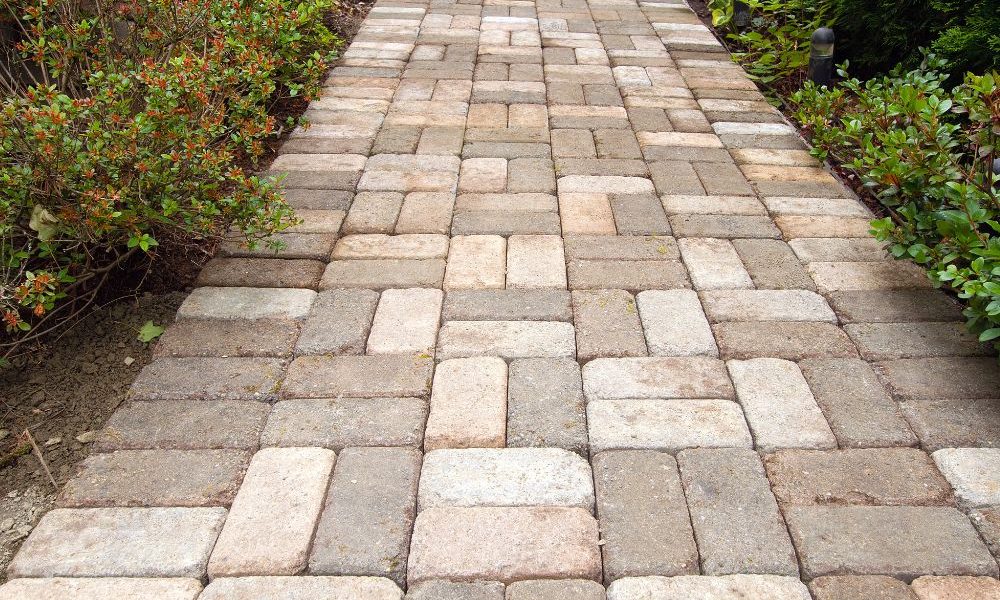Creating garden paths and walkways can transform your outdoor space into a welcoming entryway that beckons guests and provides a serene escape. Garden paths are more than just practical routes; they are integral to the landscape, guiding visitors through your garden and enhancing the overall experience. This article will explore how to design and create beautiful garden paths and walkways that are both functional and visually appealing.
The Importance of Garden Paths
Guiding the Journey
Julie Moir Messervy, a renowned landscape designer, beautifully captures the essence of garden paths: “A path is a journey, not a destination. In the garden, it should meander through spaces and draw you from one point of interest to another” (Source: The Inward Garden). Paths guide the flow of movement through your garden, highlighting key features and creating a sense of exploration.
Enhancing Aesthetics
Garden paths and walkways also play a crucial role in the visual appeal of your garden. They can frame vistas, lead to hidden nooks, and create a structured layout that enhances the natural beauty of your landscape. According to Piet Oudolf, “A good path is like a good book: it leads you on a journey, revealing new vistas and surprises at every turn” (Source: Planting: A New Perspective).
Designing Your Garden Path
Choosing the Right Materials
Selecting the appropriate materials for your garden path is essential for both aesthetics and functionality. Bunny Guinness, a respected garden designer, emphasizes, “The key to a successful path is to make it feel as if it belongs in the landscape. It should be made of materials that blend with the surroundings and should be laid out in a way that feels natural and inviting” (Source: The Garden Book).
- Gravel: Affordable and easy to install, gravel paths offer a rustic look that blends well with natural surroundings. They are ideal for informal gardens.
- Stone: Stone paths, including flagstone and slate, provide a timeless and elegant appearance. They are durable and slip-resistant, making them suitable for high-traffic areas.
- Brick: Brick paths add a classic charm and can be arranged in various patterns to create visual interest. They are durable and easy to maintain.
- Wood: Wooden paths, such as boardwalks or timber sleepers, give a warm and natural feel. They are perfect for woodland gardens or areas with moisture.
Path Layout and Design
The layout of your path should complement the natural flow of your garden. Avoid straight lines unless you are creating a formal garden. Curved paths tend to feel more organic and inviting. P. Allen Smith, a horticulturalist and TV host, suggests, “A garden path should be more than just a way to get from point A to point B. It should be a destination in itself, a place to pause and enjoy the scenery” (Source: P. Allen Smith’s Garden Home).
Consider incorporating the following elements into your path design:
- Curves and Meanders: Create gentle curves that mimic the natural landscape.
- Focal Points: Lead the path to a focal point, such as a statue, bench, or water feature.
- Resting Spots: Include small clearings or seating areas where visitors can stop and enjoy the view.
Practical Considerations
While aesthetics are important, practicality should not be overlooked. Ensure that your path is wide enough for comfortable walking and that the surface is stable and slip-resistant. Additionally, consider accessibility for all visitors, including those with mobility issues.
Enhancing Your Path with Plants
Border Plantings
Planting along the edges of your path can soften the transition between the hardscape and the garden, creating a more cohesive look. Jenny Uglow, a garden writer, notes, “The best paths are those that are worn by feet, not by machines. They should be made of materials that are soft underfoot and that will age gracefully over time” (Source: A Little History of British Gardening). Consider using low-growing plants, such as:
- Lavender: Provides a fragrant and colorful border.
- Thyme: A hardy ground cover that releases a pleasant scent when walked on.
- Hostas: Ideal for shaded areas, with lush foliage that adds texture.
Vertical Elements
Incorporate vertical elements to add height and interest along your path. Trellises, arbors, and pergolas can create a sense of enclosure and intimacy. Climbing plants like roses, clematis, and ivy can add color and fragrance.
Seasonal Interest
Choose plants that provide interest throughout the year. Spring bulbs, summer perennials, autumn foliage, and winter evergreens ensure that your path remains visually appealing in every season.
Lighting Your Path
Proper lighting enhances both the beauty and safety of your garden path. Soft, ambient lighting can highlight the path’s edges and focal points, while brighter lights at key intersections improve visibility. Solar-powered lights are an eco-friendly and easy-to-install option.
Maintenance Tips
Regular maintenance is essential to keep your garden path looking its best. Here are some tips to ensure longevity and smooth operation:
- Weeding: Keep the edges of your path free from weeds to maintain a clean appearance.
- Cleaning: Sweep or hose down the path to remove dirt and debris.
- Repairs: Check for any loose stones or bricks and fix them promptly to prevent accidents.
- Trimming: Keep border plants trimmed and tidy to prevent overgrowth onto the path.
Personal Anecdotes: My Path to Serenity
When we first moved into our home, the garden was a blank canvas. Inspired by the beautiful paths in public gardens, we decided to create a winding gravel path that meandered through our backyard. Using simple materials and a weekend’s worth of labor, we laid out the path and lined it with lavender and thyme. Over the years, this path has become a cherished feature of our garden, providing a peaceful retreat and a journey through our little slice of nature.
Conclusion
Creating welcoming garden paths and walkways is an art that combines functionality with beauty. By carefully selecting materials, designing thoughtful layouts, incorporating plants, and ensuring proper maintenance, you can transform your garden into a serene and inviting space. Whether you choose gravel, stone, brick, or wood, remember that the journey through your garden should be as enjoyable as the destination.
Invest time and creativity into your garden paths, and they will reward you with years of beauty and tranquility. As you walk along your carefully crafted path, you’ll find joy in the journey and peace in the destination, creating memories and moments that last a lifetime.




